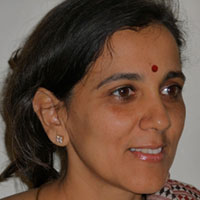The communal riots that broke out in Muzzafarnagar in the state of Uttar Pradesh in September last year took several lives and left hundreds homeless. In this Note from the Field, Rohini Somanathan shares her experience of visiting two of the largest relief camps in the region. While state relief was lacking, local Muslim communities were found to be providing a great deal of support to the refugees.
I recently visited two of the largest relief camps in Muzzafarnagar in the state of Uttar Pradesh with the Oxfam humanitarian team. My only previous trip of this kind was to flood relief camps in Bihar a few years ago and I suppose I expected something similar - stories of deaths, heroism, luck, some mixture of initiative and callousness on the part of state officials, families contemplating their changed lives and how best to rebuild them, slowly making their way back to what they had left behind. Over the course of the day I realised how much harder it is to find relief from human conflict. Responses to it are intensely political, facts often misrepresented and the prospect for a return to normalcy remote.
State apathy
The first surprise was the almost complete absence of state relief. The Malakpur camp, which was our first stop, had 649 families and 1,157 children of school going age - none had seen a school since they fled their villages in early September 2013. Several children had been born, either in the camp or in a private facility nearby. No health officials had visited and the few women who travelled to the public health centre in the block (Kairana) or the district hospital in Samli were either confronted with empty facilities or were told their treatment was too complicated to be tackled there. Miraculously, the state ambulance service at 108 did respond within a couple of hours but only did one-way trips. Mothers and their newborns were to make their own way back.
Helping hand
The camp was located on forest land and the district authorities had allowed it to be cleared by local villages to house the refugees, but no food was subsequently provided. In contrast to this state apathy, support from the local Muslim community had been overwhelming. They first shared their houses and then regularly provided food and labour and anything else that was urgently needed. The big remaining problems of daily existence were the lack of cooking fuel and toilets. The sugarcane fields that were used would soon be cut bare, denying them what little privacy they had. Sugarcane also provided work as agricultural labour but most men struggled with this, having been petty traders with no experience working on the land. That income would also end with the harvest.
What next?
An obvious question, in their minds and ours, was What Next? Every one of the dozens of people we spoke to was clear that they were not going back. The surprise here was that nobody reported a history of violence. The Muslims were small minorities in their villages and could no longer trust the Jats1 even though they had both lived there for many generations. The hatred had no antecedent and yet was now solid and undisputable. There was talk of families receiving a grant of Rs. 5 lakh ($8,000 approx.) each to start a new life, but it was not clear where. No family in the camp had received this so far. In the slightly smaller camp at Loi, about 25 kilometres from Muzzafarnagar, life was easier in some ways. The camp was close to Phugana, one of with worst-hit villages, so some children could continue to attend their former school. A few government rations had come in and there were bundles of firewood by one of the tents. But the terror and trauma were greater. There were stray killings every few days. Many of the families had locked themselves in their houses when the violence had started. Their calls to the police had not been answered and they were finally rescued by army trucks. Memories were fresh and bloody and poured out painfully.
As I was rushing out of the house early that morning, I hesitated before placing my usual bindi on my forehead. Driving back, I was glad it was there - a symbol that empathy could and must cross sectarian lines to start the process of healing.
A version of this article has appeared in Hindu Business Line.
Notes:
- Jats are a community of people in Northern India.




 10 January, 2014
10 January, 2014 




Comments will be held for moderation. Your contact information will not be made public.